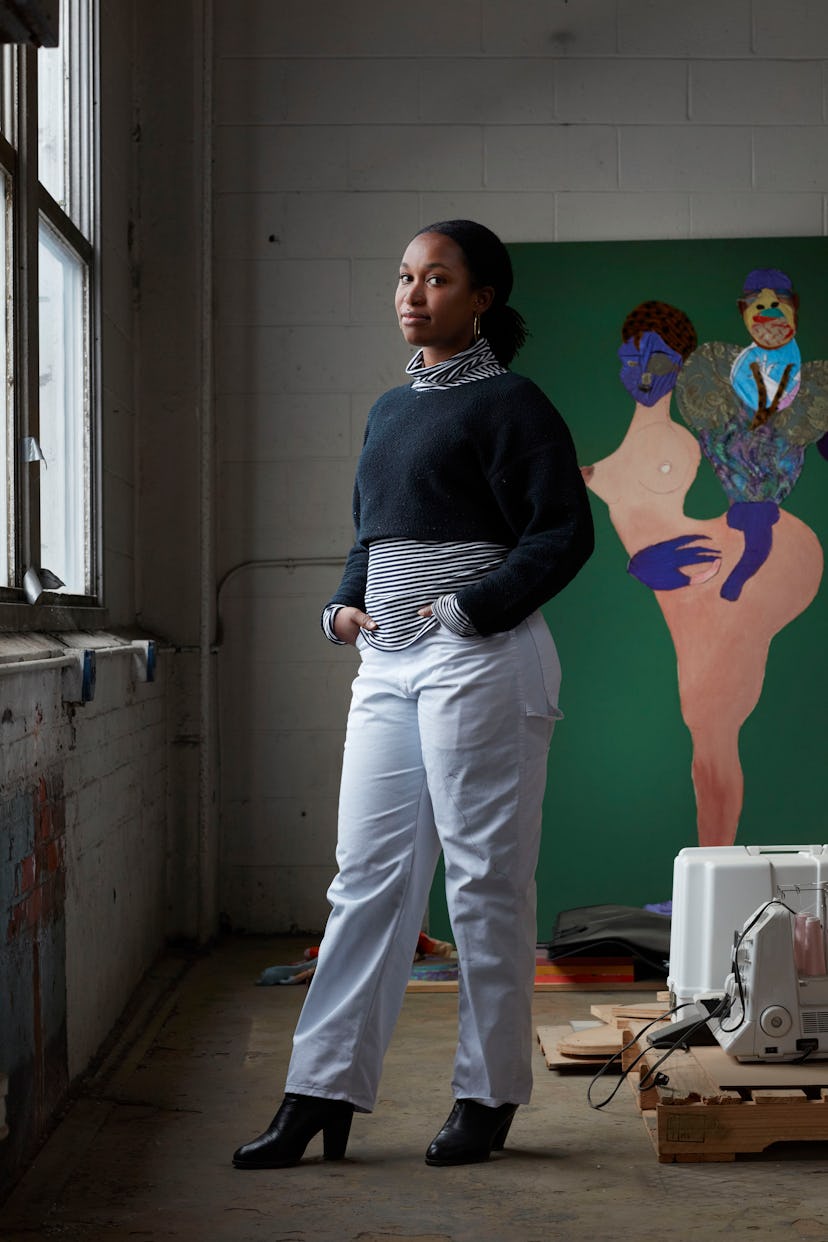Artist Tschabalala Self Explains the Art and Commerce of Designing Her Own Louis Vuitton Bag

If you’re just finding out about the artist Tschabalala Self—who, at 29, already has already established both industry cred and a cult following—it’s more likely than not a little late for you to acquire some of her work for yourself. Just last week, her 2015 work Out of Body became the standout of Christie’s post-war and contemporary art sale when it sold for $382,000—five times its high estimate, and more than double her previous auction record. Suffice to say, the days of her works selling at Art Basel for as low as $10,000 appear to be over.
The timing couldn’t be better, then, for Louis Vuitton to roll out its new capsule collection, ArtyCapucines. To coincide with “Louis Vuitton X,” its new exhibition spanning 160 years’ worth of collaborations with Karl Lagerfeld, Cindy Sherman, and Rei Kawakubo, and more art and design heavyweights, Vuitton tapped six contemporary artists to re-envision its signature Capucines bag. On its own, the $8,600 price tag that comes with each edition might sound steep. But these days, in the context of Self’s work, it’s practically a steal.
“Sapphire,” 2015, by Tschabalala Self.
If you’re wondering how Self, who was born and raised in Harlem, managed to inject her signature political commentary into an object as condensed as a designer handbag, well, she didn’t—at least not explicitly. “I’m black and I’m female, and my work is about being a black female that navigates the world. But for people to then think that because of that, I’m not allowed to participate in certain opportunities, is counterintuitive to the whole purpose of why I’m making this kind of work,” she said. “I’m making this kind of work so that all people can have more expansive ways of thinking about how they can navigate the world.”
The black figures that typically populate Self’s signature massive, fabric-adorned paintings have long invited comparisons to Kerry James Marshall. (At times they’re defiant; at times they’re pointedly—and therefore politically—ordinary.) But recreating them in this context, Self decided, wouldn’t “make any sense.” In the end, that only added to her enthusiasm for working with Vuitton: “It was a really, really cool exercise to push myself to do something a little bit different,” she said of her approach to the collaboration as a “formal exercise” instead.
Tschabalala Self’s takes on Louis Vuitton’s Capucines bag, featured in the house’s latest ArtyCapucines capsule collection.
Somehow, over all of the years that Self has used scraps of fabric—including from her own old jeans—to transform a canvas, she’d never worked with leather until Vuitton approached her. Her final ArtyCapucines edition, then, is the product of a very chic crash course; it features no less than 19 different kinds of leather, ranging from calfskin to lizard. Self, who Vuitton gave free rein, used each to deconstruct the house’s iconic monogram logo, using 200 separate hand-cut and painted shapes.
In addition to Self, Vuitton also tapped Urs Fischer, Sam Falls, Nicholas Hlobo, Alex Israel, and Jonas Wood to take on the Capucines, which is named after the Parisian street where Louis Vuitton opened his first shop in the 1850s. If you noticed that all of those artists are men, well, so did Self. “I felt like it was important to have my presence there,” she said. It seems safe to say that Vuitton did, too.
Clockwise from top left: Sam Falls, Urs Fischer, Nicholas Hlobo, Jonas Wood, Alex Israel, and Tschabalala Self’s takes on Louis Vuitton’s Capucines bag, which make up Louis Vuitton’s latest ArtyCapucines capsule collection.
Related: Meet Tschabalala Self, on a Visit to Kerry James Marshall’s “Mastry”